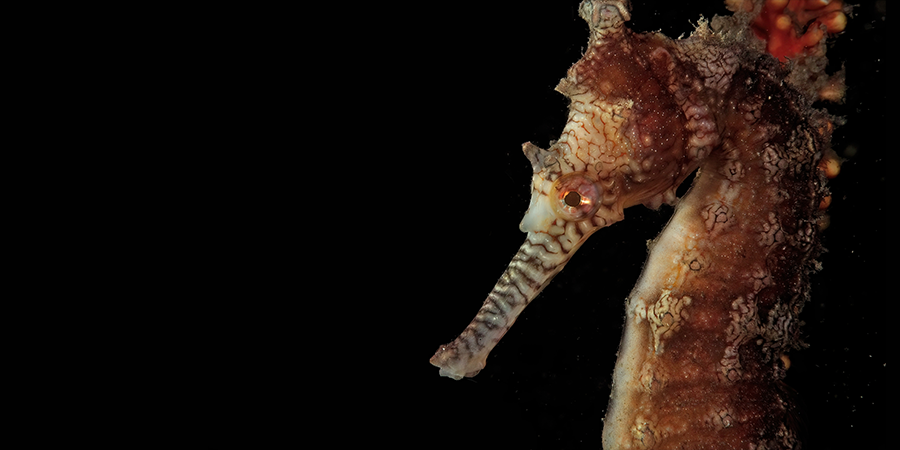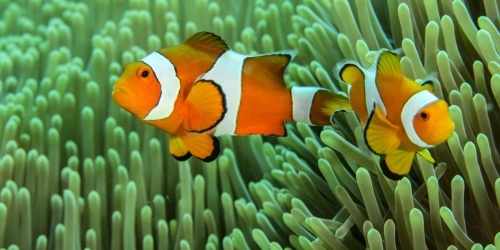
Western Australian Seahorse - Photo © Peter Nicholas
What is a Western Australian seahorse? Contrary to its delicate appearance and its horse-like head, the Western Australian seahorse (Hippocampus angustus) is a fish and a rather special one at that – it is completely confined to Western Australia!
What does it look like? Seahorses resemble little chess knights and in ancient times they were regarded as part fish and part horse. They have an elongated snout, a tail that can be used to grasp objects and a body that is encased in bony segments. There are about a dozen seahorses found in Australian waters. This particular species can be recognised by the series of brown lines striping its snout. However, its colour is quite variable and may be white, orange, yellow, pink or brownish. They are able to slowly change colour. Western Australian seahorses can reach up to 22 centimetres long.
Where does it live? The Western Australian seahorse is found in sheltered reefs and seagrass areas to depths of 10 metres from the proposed Dampier Archipelago Marine Park to Ngari Capes Marine Park (stretching between Busselton and Augusta). It is common in the lower reaches of Perth's Swan River, where it uses its grasping (prehensile) tail to hold on to ropes around jetties and other areas where boats are moored, and in seagrass areas in Cockburn Sound and in the nearby Shoalwater Islands Marine Park. However, it is not frequently seen elsewhere in its range. Individuals are sometimes washed ashore in storms and subsequently found dead on beaches.
What does it eat and how? It captures tiny crustaceans that drift past in the water column by quickly opening its mouth and sucking them in.
Behaviour: Seahorses are slow-moving as their tiny fins are not able to propel them very well and they rely on camouflage and their armour-plated bodies for their safety.
Breeding and caring for young: Seahorse biology has long captured human imagination, as it is the father that becomes ‘pregnant'. The mother lays eggs into a pouch on the male's belly. He then fertilises them and cares for the eggs in his pouch until they hatch. The male even experiences contractions as the youngsters emerge from a small hole in the pouch. When they hatch they look like miniature versions of their parents.
Conservation status: Seahorses are heavily used in traditional Chinese medicine. As a result, in May 2004, they were given protection under Appendix II of the United Nations Convention on the International Trade in Endangered Species (CITES). It is hoped that captive breeding programs will help to reduce pressure on wild populations. Habitat destruction is also thought to be a threat. Western Australian seahorses are not especially common and are no doubt collected illegally to keep in aquariums or as ornamental specimens.
Protecting the Western Australian seahorse: If you are ever lucky enough to see a seahorse in the water, admire it for as long as you wish but please do not touch it.



























